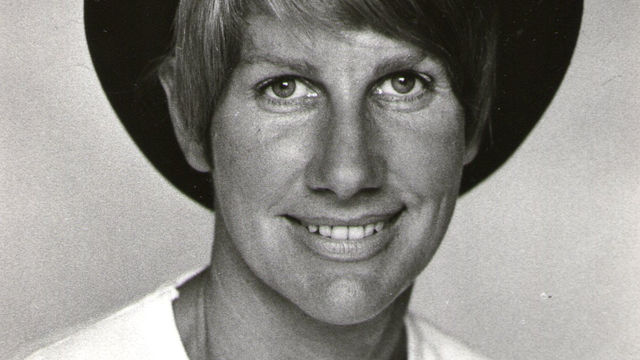
Narcisa Hirsch
The experimental filmmaker Narcisa Hirsch was born in Berlin in 1928 and moved to Argentina before the beginning of World War II. After a short-lived career as a painter, which included shows at the well-respected Galería Lirolay in Buenos Aires, Hirsch began organizing art happenings in 1967. The first, Marabunta (Swarm), entailed a larger-than-life-size skeleton of a woman covered with food and stuffed with live pigeons painted in neon colors. Working alongside Marie Louise Alemann (1927–2015) and Walter Mejía, Hirsch organized Marabunta to coincide with the premiere in Argentina of Michelangelo Antonioni's film Blow-Up (1966), in the theater El Coliseo, where the screening of the film and the happening took place. A last-minute impulse prompted Hirsch to hire a young cinematographer—the leftist militant Raymundo Gleyzer, who was later killed by the military—to document the happening. After 1967 Hirsch began shooting in 16mm and 8mm film and started meeting with a group of other young experimental filmmakers that included Alemann, Claudio Caldini (b. 1951), and Horacio Vallereggio (b. 1945). Unable to show their films in traditional theaters or museums, the group presented their work in small venues or at the Instituto Goethe, a space receptive to their experimental work. The transition from film to video at the beginning of the 1980s was the main reason for the dispersal of the group.
Hirsch's extended body of work includes Come Out (1971), Diarios patagónicos 1 (Patagonian diaries 1, 1972–73), Taller (Studio, 1975), Testamento y vida interior (Testament and inner life, 1977), Homecoming (1978), Ama-zona (The Amazon/ Love zone, 1983), A-Dios (Goodbye/To God, 1989), Rumi (1999), Aleph (2005), and El mito de Narciso (The myth of Narcissus, 2011). The Canadian filmmaker Michael Snow (b. 1929) has inspired Hirsch's vision, specifically his Wavelength (1967) and A Casing Shelved (1970), which has a direct resonance with her Taller. In 2013 the Toronto International Film Festival hosted a conversation between Snow and Hirsch and a screening of their films. Parallel to her filmmaking career, Hirsch has taken up other forms of art. In the late 1970s, in the midst of the military dictatorship in Argentina, she covered public walls with phrases that sought to politicize the city. Later, in the 1990s and 2000s, Hirsch penned several books that were published in Argentina, such as La pasión según San Juan: Poema a partir de un guión cinematográfico (1992). Specializing in experimental film and video, the publishing house mQ2* in 2013 published a boxed set of Hirsch's experimental films from 1971 to 2011 and a bilingual book about her work with writings by Victoria Sayago, Emilio Bernini, and Hirsch. She has been celebrated in many film festivals, including the Buenos Aires Festival Internacional de Cine Independiente, which honored her with an international career retrospective in 2012.
—Marcela Guerrero
Selected Films
1966 Manzanas (director)
1969 Retrato de una artista como ser humana (director)
1974 Bebés (director)
1979 Mujeres (director)
1985 Ana, ¿dónde estás? (director and screenwriter)
Selected Bibliography
Giunta, Andrea. "Narcisa Hirsch: Portraits." Alter/nativas: Latin American Cultural Studies Journal, no. 1 (Autumn 2013). http://alternativas.osu.edu/en/issues/autumn-2013/debates/giunta.html.
Rist, Peter. "Narcisa Hirsch and Argentine Experimental Film: An Interview with Narcisa Hirsch." Off Screen 18 (May 2014). http://offscreen.com/view/narcisa-hirsh-and-argentine-experimental-film.
Sayago, Victoria, Emilio Bernini, and Narcisa Hirsch. El cine experimental de Narcisa Hirsch. Buenos Aires: mQ2*, 2013.
Torres, Alejandra, comp. Narcisa Hirsch: Catálogo de obra. Buenos Aires: Casa Nacional del Bicentenario, 2010.
Windhausen, Federico. "Narcisa Hirsch." In Speaking Directly: Oral Histories of the Moving Image, 47–61. San Francisco: SFC Books, 2013.


